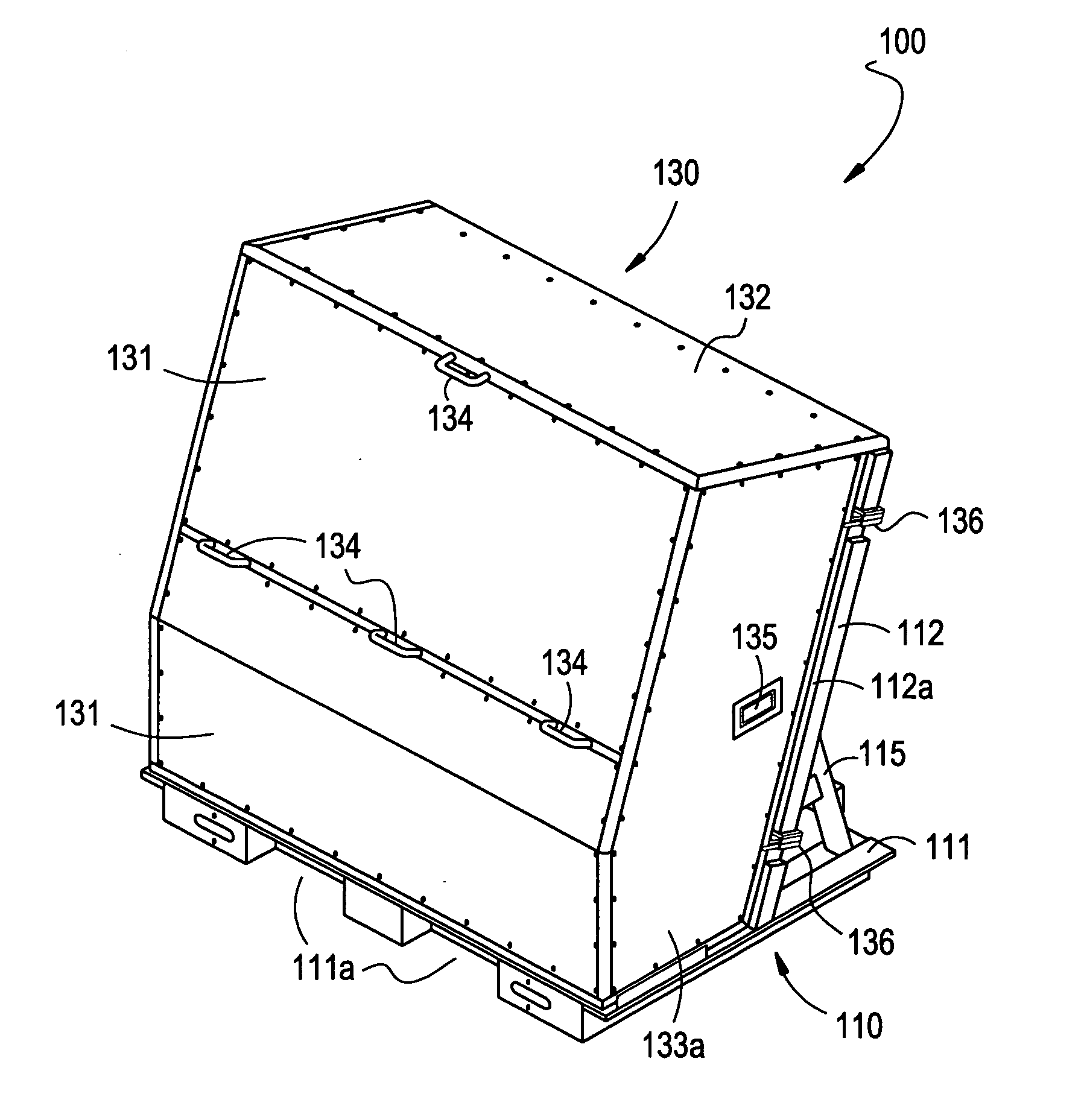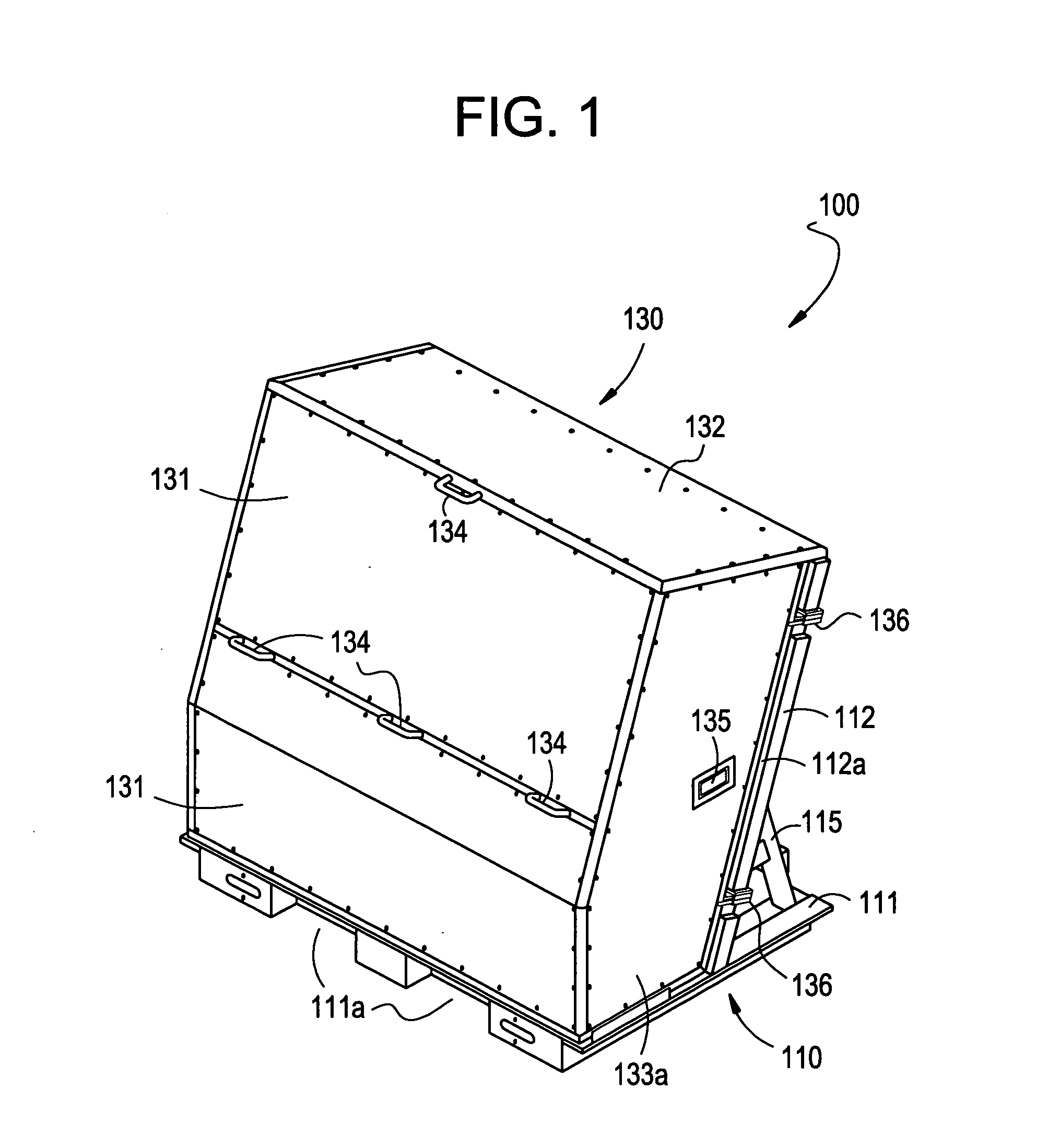Recognizing limitations in packing density, their requirements for significant storage space, and the difficulty to extend their application to ever-increasing sizes, these conventional non-contact or spacer type packages have effectively reached a practical limitation for glass sizes greater than or equal to Generation 5.
When containers of these types are used, however, the size of glass sheets to be transported is limited.
In addition, the glass sheets are undesirably susceptible to
contamination during transportation, since the crates or boxes are also poor in weatherability, often requiring over-pack (e.g. a box within a box).
Further, there is a problem in that a cleaning process for removing adherents, such as a residual
adhesive remaining on the
glass sheet after removing the
adhesive protective films and contaminants which are attached on the glass sheets in the course of the transportation, typically takes a long time.
It should be noted that even some non-
adhesive materials, such as
polyethylene or polymeric films, if used, may leave some residual organic materials which must also be washed off with a detergent or other like wash; however, these non-adhesive residuals are typically not as difficult to clean off or as
time consuming as residuals left behind by adhesives.
However, these and other existing prior art solutions still have several limitations.
Firstly, there is limited protection of container contents from weather during transportation.
Additionally, the disposing of these consumable items becomes an environmental and cost issue as well.
Where tilting is not required (for instance as in typical PP or L type prior art containers), loading glass sheets is complex due to precision of placement in slots.
Additionally, prior art PP or L type containers typically only hold about 20 sheets of glass requiring frequent change-out of containers.
Further, the construction of mild steel with painted surfaces found also in the prior art is susceptible to chipping, flaking and
particle generation, as well as
corrosion, resulting in marginal clean room compatibility.
Construction is also subject to deformation during normal warehouse handling.
In certain other prior art solutions, there is difficulty in handling containers on conveyors and
truck beds due to limited contact area of a
pallet base.
Additionally, glass
cushioning materials exhibit significant deformation over time, requiring periodic adjustment of packing and unloading
robot controls, as well as periodic full replacement due to permanent deformation.
Still further, in certain prior art solutions, there is an inability to scale up for larger sizes of glass without
material handling equipment (overhead lift) being involved.
Still further, most of the prior art solutions, include multiple loose parts (some on the order of 10 or more pieces plus hardware) which though allow for collapsibility, are costly both to assemble and to maintain.
One primary limitation of the prior art is that there is marginal retention of glass movement in container.
The prior art methods to secure a stack of glass sheets and to avoid movement during transportation after it has been packed or shipped are not sufficient to retain the glass sheets from moving under all conditions such as transportation conditions of excessive vibration or shock; hence there is the potential for breakage to occur.
Thereby existing methods of packaging LCD glass seem to have met practical limitations in scaling beyond Gen 5
glass sheet size [approximately 1100 mm×1300 mm].
They carry an inherent penalty in space and logistics due to low sheet counts per container volume.
Dense packaging has been proven as a viable delivery model, however, as substrate sizes become even larger, such as with Gen 7 and beyond, new challenges arise for dense packaging, particularly around size and weight of the container components, which become even more unwieldy for operators to
handle, as well as transportation constraint issues, for instance, transporting containers through standard size
doors, available sizes of shipping containers and standard trucks.
 Login to View More
Login to View More  Login to View More
Login to View More 


